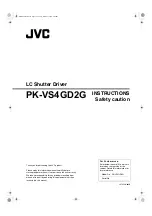
PRODUCT DESCRIPTION
2 – 3
Defect Management Zone (DMZ)
Defect Management Zone (DMZ)
Defect Management Zone (DMZ)
Defect Management Zone (DMZ)
Defect Management Zone (DMZ)
Each drive model has a fixed number of spare sectors per drive, all of which are located at the end of the
drive. Upon detection of a bad sector that has been reassigned, the next sequential sector is used.
For example, if sector 3 is flagged, data that would have been stored there is “pushed down” and recorded
in sector 4. Sector 4 then effectively becomes sector 3, as sequential sectors are “pushed down” across the
entire drive. The first spare sector makes up for the loss of sector 3, and so maintains the sequential order of
data. This push down method assures maximum performance.
On-the-Fly Hardware Error Correction Code (ECC)
On-the-Fly Hardware Error Correction Code (ECC)
On-the-Fly Hardware Error Correction Code (ECC)
On-the-Fly Hardware Error Correction Code (ECC)
On-the-Fly Hardware Error Correction Code (ECC)
14 symbols, single burst, guaranteed.
Software ECC Correction
Software ECC Correction
Software ECC Correction
Software ECC Correction
Software ECC Correction
24 symbols, single burst, guaranteed.
Automatic Park and Lock Operation
Automatic Park and Lock Operation
Automatic Park and Lock Operation
Automatic Park and Lock Operation
Automatic Park and Lock Operation
Immediately following power down, dynamic braking of the spinning disks delays momentarily allowing the
read/write heads to move to an inner mechanical stop. A small fixed magnet holds the rotary actuator in
place as the disk spins down. The rotary actuator is released only when power is again applied.
Cache Management
Cache Management
Cache Management
Cache Management
Cache Management
Buffer Segmentation
Buffer Segmentation
Buffer Segmentation
Buffer Segmentation
Buffer Segmentation
The data buffer is organized into two segments: the data buffer and the micro controller scratch pad.
The data buffer is dynamically allocated for read and write data depending on the commands received.
A variable number of read and write buffers may exist at the same time.
Read-Ahead Mode
Read-Ahead Mode
Read-Ahead Mode
Read-Ahead Mode
Read-Ahead Mode
Normally, this mode is active. Following a read request, disk read-ahead begins on the first sector and
continues sequentially until the allocated buffer is full. If a read request is received during the read-ahead
operation, the buffer is examined to determine if the request is in the cache. If a cache hit occurs, read-
ahead mode continues without interruption and the host transfer begins immediately.
Automatic Write Reallocation (AWR)
Automatic Write Reallocation (AWR)
Automatic Write Reallocation (AWR)
Automatic Write Reallocation (AWR)
Automatic Write Reallocation (AWR)
This feature is part of the write cache and reduces the risk of data loss during deferred write operations. If a
disk error occurs during the disk write process, the disk task stops and the suspect sector is reallocated to a
pool of alternate sectors located at the end of the drive. Following reallocation, the disk write task continues
until it is complete.
Write Cache Stacking
Write Cache Stacking
Write Cache Stacking
Write Cache Stacking
Write Cache Stacking
Normally, this mode is active. Write cache mode accepts the host write data into the buffer until the buffer
is full or the host transfer is complete. A command complete interrupt is generated at the end of the transfer.
A disk write task begins to store the host data to disk. Host write commands continue to be accepted and
data transferred to the buffer until either the write command stack is full or the data buffer is full. The drive
may reorder write commands to optimize drive throughput.













































